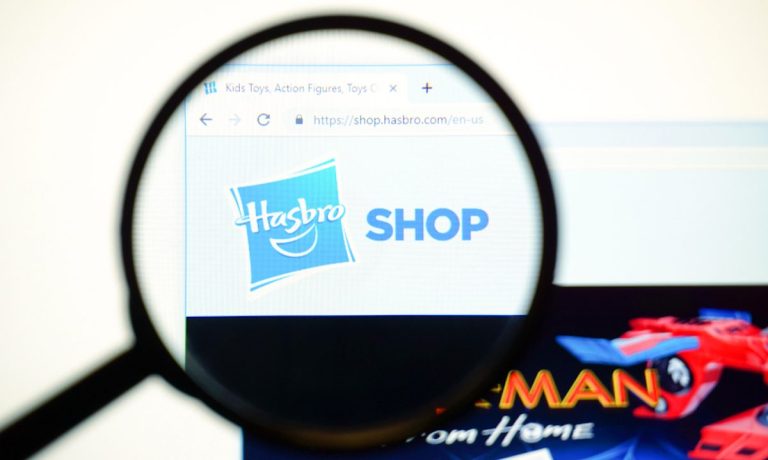Following a year in which board games were among the highlights of social interaction, Hasbro has seen a decrease in demand for some of its mainstay products, but an acceleration in its digital gaming and entertainment divisions.
Officially, Hasbro’s second-quarter revenue was $1.3 billion, up 54 percent compared to 2020 and 9 percent compared to 2019. The Rhode Island-based company said consumer products revenue grew 33 percent year over year, driven by Nerf, Transformers and Play-Doh products as well as the Marvel and Star Wars franchises. Still, global sales declined by mid-single digits as toys saw increased demand — but games, including Monopoly, saw a decrease after last year’s pandemic-induced board game frenzy.
“The fact is that we have a very rich mix of new innovative products in our toy business … that are in high demand with games and players, with families and fans engaging in our brands in an increasing manner,” said CEO Brian Goldner.
The digital gaming business, which also includes the Wizards of the Coast brand, saw explosive quarterly growth, with revenue jumping nearly 118 percent versus 2020 to $406 million. The growth was led by two physical product releases for Magic: The Gathering as well as the launch of the digital game Magic: The Gathering Arena on mobile. Goldner noted that Magic Arena has seen increased engagement of consumers who also play Magic the Gathering, which, in tandem with a return to in-store and in-person gameplay, is a tailwind to the business.
“Digital is going to be a growing part of the business,” Goldner told investors and analysts. “But I also expect, and we’re seeing, that the analog businesses for both D&D and Magic continue to grow” — meaning that while digital sales will increase, it may not be as much as expected.
Entertainment Rebound
Advertisement: Scroll to Continue
Hasbro said its entertainment division also saw strong growth in the second quarter, with a 47 percent increase in revenue as theatrical releases and content production return to pre-pandemic levels.
The entertainment wave is expected to continue in the second half of the year, with a new My Little Pony film releasing on Netflix in September to relaunch the brand. Hasbro is also partnered on several feature films, including the G.I. Joe film Snake Eyes, released last week; Marvel Studios’ Black Widow and Spider-Man: No Way Home, released earlier this month and in December, respectively; and Sony’s Ghostbusters: Afterlife, releasing in November.
Pre-production of a live-action Dungeons & Dragons movie, slated for release in 2023, has also begun, with planning underway for consumer products and licensing opportunities.
Goldner said efforts around the Dungeons & Dragons film “is really the shape of things to come as we activate more Hasbro IP (intellectual property) … and begin to activate them across the flywheel.”
“So overall, this is a very good and important time for us,” he said, adding that he sees entertainment as “the catalyst that unlocks the next level of value in our portfolio.”
Looking Ahead
Chief Financial Officer Deborah Thomas noted that freight and inputs costs are “significantly higher” this year than last year, with ocean freight costs, for example, projected to be four times higher on average.
To counter this, Hasbro is implementing price increases across its product lines in the third quarter, which should be fully realized by the fourth quarter and holiday shopping season. “We expect this to offset the rising costs of freight and commodities we continue to see across the business,” Thomas said.
Still, the CFO said Hasbro is working to ensure product availability during the holiday season despite a potential shift in delivery dates. Initiatives include sourcing more products earlier out of multiple countries, increasing the number of ocean carriers Hasbro works with and utilizing more ports to expedite delivery. “I think the holidays should be incredibly good and very, very solid,” Goldner predicted.
Hasbro stock is up over 7 percent year to date, compared to the S&P 500’s 17.5 percent rise. Over the past 12 months, Hasbro is up 19 percent and S&P 500 is up 37 percent.




